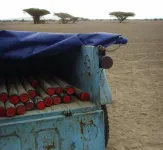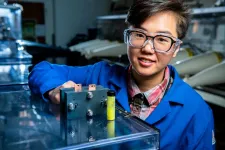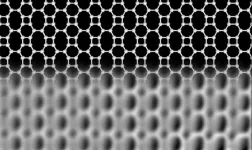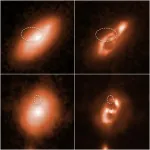New research maps COVID-19 dispersal dynamics in New York's first wave of epidemic
Study suggests borough of Queens was major hub of COVID-19 dispersal
2021-05-20
(Press-News.org) During the first phase of the COVID-19 epidemic, New York City experienced high prevalence compared to other U.S. cities, yet little is known about the circulation of SARS-CoV-2 within and among its boroughs. A study published in PLOS Pathogens by Simon Dellicour at Université Libre de Bruxelles, Belgium, Ralf Duerr and Adriana Heguy at New York University, USA, and colleagues describe the dispersal dynamics of COVID-19 viral lineages at the state and city levels, illustrating the relatively important role of the borough of Queens as a SARS-CoV-2 transmission hub.
To better understand how the virus dispersed throughout New York City during the first few months of the pandemic, the authors constructed a phylogenetic tree to illustrate the evolutionary relationships of all virus samples. The authors were able to recreate how the virus spread across the city, replicated, and mutated, including which areas of New York City transmitted the virus to other locations with greater frequency. The researchers also identified key mutations and tracked their dispersal.
The authors found that the borough of Queens played a significant role of COVID-19 transmission in the early phases of the pandemic due to the relatively higher local circulation of viral lineages. While the study provides important new insights into genomic surveillance, the lack of additional samples collected outside the city may have led to an underestimation of the viral circulation in neighboring areas.
According to the authors, "As in many other cities around the world, important commuting activity radiating out of central city areas likely played an important role in disseminating viral lineages throughout the state. However, commuting workers are likely not the only drivers of SARS-CoV-2 dissemination across the city."
INFORMATION:
Peer-reviewed; Simulation / modelling
In your coverage please use this URL to provide access to the freely available article in PLOS Pathogens: http://journals.plos.org/plospathogens/article?id=10.1371/journal.ppat.1009571
Citation: Dellicour S, Hong SL, Vrancken B, Chaillon A, Gill MS, Maurano MT, et al. (2021) Dispersal dynamics of SARS-CoV-2 lineages during the first epidemic wave in New York City. PLoS Pathog 17(5): e1009571. https://doi.org/10.1371/journal.ppat.1009571
Funding: SD is supported by the Fonds National de la Recherche Scientifique (FNRS, Belgium). SLH acknowledges support from the Research Foundation - Flanders (Fonds voor Wetenschappelijk Onderzoek - Vlaanderen, G0D5117N). BV is supported by a post-doctoral research fellowship (grant nr. 12U7121N) of the Research Foundation - Flanders (Fonds voor Wetenschappelijk Onderzoek). AC was supported by grants from the NIH (San Diego Center for AIDS Research, CFAR, AI306214 and AI100665), and the James B. Pendleton Charitable Trust. MTM is supported by a NIH Grant (R35GM119703). GWH is jointly funded by the South African Medical Research Council and the National Institutes of Health, USA grant 1U01Al152151-01. GB acknowledges support from the Research Foundation - Flanders (Fonds voor Wetenschappelijk Onderzoek - Vlaanderen, G0E1420N, G098321N) and from the Interne Fondsen KU Leuven/Internal Funds KU Leuven under grant agreement C14/18/094. RD was partially supported by the NIH grant 1R01AI122953. AH, SR, CM, and PZ are supported by the Genome Technology Center, which is in part by the Cancer Center Support Grant P30CA016087 at the Laura and Isaac Perlmutter Cancer Center. The funders had no role in study design, data collection and analysis, decision to publish, or preparation of the manuscript.
Competing interests: The authors have declared that no competing interests exist.
[Attachments] See images for this press release:

ELSE PRESS RELEASES FROM THIS DATE:
2021-05-20
Ancient pollen samples and a new statistical approach may shed light on the global rate of change of vegetation and eventually on how much climate change and humans have played a part in altering landscapes, according to an international team of researchers.
"We know that climate and people interact with natural ecosystems and change them," said Sarah Ivory, assistant professor of geosciences and associate in the Earth and Environmental Systems Institute, Penn State. "Typically, we go to some particular location and study this by teasing apart these influences. In particular, we know that the impact people have goes back much earlier than what is typically ...
2021-05-20
A compound used widely in candles offers promise for a much more modern energy challenge--storing massive amounts of energy to be fed into the electric grid as the need arises.
Scientists at the U.S. Department of Energy's Pacific Northwest National Laboratory have shown that low-cost organic compounds hold promise for storing grid energy. Common fluorenone, a bright yellow powder, was at first a reluctant participant, but with enough chemical persuasion has proven to be a potent partner for energy storage in flow battery systems, large systems that store energy for the grid.
Development of such storage is critical. When the grid goes offline due to severe weather, for instance, the large batteries under ...
2021-05-20
Wherever ecologists look, from tropical forests to tundra, ecosystems are being transformed by human land use and climate change. A hallmark of human impacts is that the rates of change in ecosystems are accelerating worldwide.
Surprisingly, a new study, published today in Science, found that these rates of ecological change began to speed up many thousands of years ago. "What we see today is just the tip of the iceberg" noted co-lead author Ondrej Mottl from the University of Bergen (UiB). "The accelerations we see during the industrial revolution and modern periods have a deep-rooted history stretching back in time."
Using a global network of over 1,000 fossil pollen records, the team found - and expected to find - a first peak ...
2021-05-20
Carbon exists in various forms. In addition to diamond and graphite, there are recently discovered forms with astonishing properties. For example graphene, with a thickness of just one atomic layer, is the thinnest known material, and its unusual properties make it an extremely exciting candidate for applications like future electronics and high-tech engineering. In graphene, each carbon atom is linked to three neighbours, forming hexagons arranged in a honeycomb network. Theoretical studies have shown that carbon atoms can also arrange in other flat network patterns, while still binding to three neighbours, but none of these predicted networks had been realized until now.
Researchers at the University of Marburg ...
2021-05-20
Analyzing data obtained with the Atacama Large Millimeter/submillimeter Array (ALMA), researchers found a galaxy with a spiral morphology by only 1.4 billion years after the Big Bang. This is the most ancient galaxy of its kind ever observed. The discovery of a galaxy with a spiral structure at such an early stage is an important clue to solving the classic questions of astronomy: "How and when did spiral galaxies form?"
"I was excited because I had never seen such clear evidence of a rotating disk, spiral structure, and centralized mass structure in a distant galaxy in any previous ...
2021-05-20
A new study published in the journal Science, highlights the opportunity to complement current climate mitigation scenarios with scenarios that capture the interdependence among investors' perception of future climate risk, the credibility of climate policies, and the allocation of investments across low- and high-carbon assets in the economy.
Climate mitigation scenarios are key to understanding the transition to a low-carbon economy and inform climate policies. These scenarios are also important for financial investors to assess the risk of missing out on the transition or making the transition happen too late and in a disorderly fashion. In this respect, the scenarios developed by the platform of financial authorities ...
2021-05-20
Deaths caused by indirect effects of the pandemic emphasize the need for policy changes that address widening health and racial inequities.
More than 15 months into the pandemic, the U.S. death toll from COVID-19 is nearing 600,000. But COVID-19 deaths may be underestimated by 20%, according to a new, first-of-its-kind study from Boston University School of Public Health (BUSPH), the University of Pennsylvania, and the Robert Wood Johnson Foundation.
Published in the journal PLOS Medicine, the study uses data from the National Center for Health Statistics (NCHS) and the Centers for Disease Control and Prevention ...
2021-05-20
ITHACA, N.Y. - Cornell University engineers and plant scientists have teamed up to develop a low-cost system that allows grape growers to predict their yields much earlier in the season and more accurately than costly traditional methods.
The new method allows a grower to use a smartphone to record video of grape vines while driving a tractor or walking through the vineyard at night. Growers may then upload their video to a server to process the data. The system relies on computer-vision to improve the reliability of yield estimates.
Traditional methods for estimating grape ...
2021-05-20
INFORMS Journal Information Systems Research Study Key Takeaways:
In real-time feedback the relationship source (peer, subordinate or supervisor) plays a role: the feedback tends to be more critical when it is from supervisors.
Favoritism and retribution are impacted in real-time feedback: Supervisors adopt tit-for-tat strategies, but peers do not.
Men rate women higher than men, and women rate men and women similar to how men rate men.
Positive real-time feedback has a stronger effect on future ratings than negative feedback.
CATONSVILLE, MD, May 20, 2021 - To deliver real-time feedback to support employee development and rapid innovation, many companies are replacing formal, review-based performance management with systems that enable frequent and continuous employee evaluation. ...
2021-05-20
Astronomers using NASA's Hubble Space Telescope have traced the locations of five brief, powerful radio blasts to the spiral arms of five distant galaxies.
Called fast radio bursts (FRBs), these extraordinary events generate as much energy in a thousandth of a second as the Sun does in a year. Because these transient radio pulses disappear in much less than the blink of an eye, researchers have had a hard time tracking down where they come from, much less determining what kind of object or objects is causing them. Therefore, most of the time, astronomers don't know exactly where to look.
Locating where these blasts ...
LAST 30 PRESS RELEASES:
[Press-News.org] New research maps COVID-19 dispersal dynamics in New York's first wave of epidemic
Study suggests borough of Queens was major hub of COVID-19 dispersal






